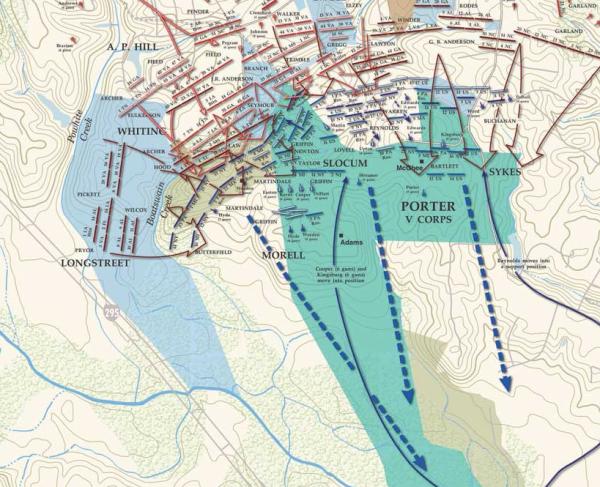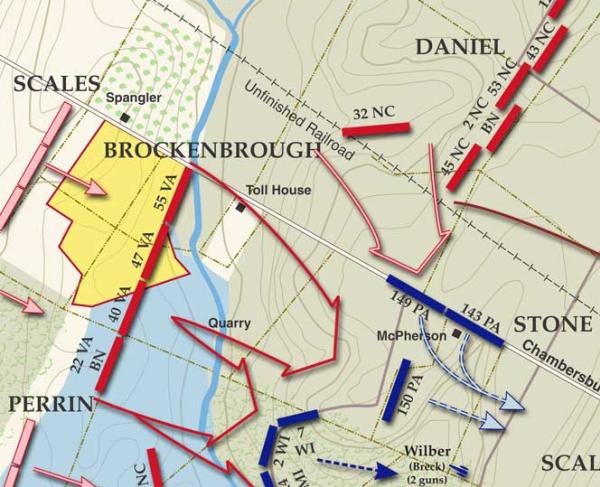Elkin’s Ferry - April 4, 1864
American Battlefield Trust’s map of the Battle of Elkin’s Ferry
In the spring of 1864, more than 40,000 Union soldiers began converging on Shreveport, Louisiana, the target of General Nathaniel Banks’ Red River Campaign. A portion of those forces were under the command of General Frederick Steele. Steele’s, in an operation that would become known as the Camden Expedition, would support Banks by advancing on Shreveport from the North. In March, Steele set out from Little Rock, Arkansas, and reached the Little Missouri River on April 3. Steele chose to cross at Elkin's Ferry. Here, Steele met his first real opposition during the campaign.
Colonel William McLean was sent across with two regiments and a section of artillery to establish a bridgehead and reconnoiter enemy positions. McLean’s total force numbered about 2,000 men. After clashing with Confederate skirmishers, McLean ordered Lieutenant Colonel Francis M. Drake to position six companies of infantry and a section of artillery astride the road leading from Elkin's Ferry. His caution was prudent, for on the morning of April 4, Confederate General John S. Marmaduke arrived with two brigades of cavalry and a section of artillery to attack the Union forces.
For two hours Drake’s 300 men held out against 1,200 enemy troopers but eventually, the Union left gave way, leaving the artillery exposed. The Federals’ guns, however, were saved when some of McLean’s reserves came up and repelled several enemy charges. Eventually, 2,000 Union reinforcements under the command of General Samuel Rice arrived on the scene. Realizing that the odds were against him, Marmaduke retired from the field of battle, leaving the rest of Steele’s force free to complete the crossing of the Little Missouri River.
From beginning to end, the battle lasted about five hours and produced 92 casualties (although estimates vary). The Union force apparently lost 38 men, while the Southerners suffered 54 some casualties.
Learn More: The Battle of Elkin's Ferry



